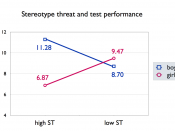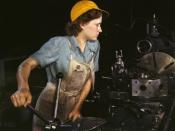Young children's attitudes toward cross-gender typed toys were measured in this experiment. Due to the fact that, children are receptive to societal pressures at a young age, two experiments were conducted to test whether or not gender specific toys influenced both boys and girls.. In the first experiment conducted, children received task related gender typed information, task unrelated information, or no gender information at all. In the second experiment, however, the children were asked their opinions of cross- sex gendered play toys thus, measuring the amount of preconceived ideas held by these pre-adolescents. The results conclude that pre-adolescent boys are more likely to be influenced by gender stereotypes, as well as, by the perception of others that a toy is sex specific.
1. Stereotyping Developed During Pre-Adolescence is based on Social Interactions Among Specific Age Groups and Their Perceived Affiliations
Children, both boys and girls, appear to be aware of at a young age what is suitable behavior and expected play toys for each sex.
Children rely on self-evaluative reactions (feelings one has about oneself as a consequence of behavior) in predicting gender-related behaviors ( Bussey & Bandura, 1992). It has been found that children are influenced by people's reactions to gender-typed play (Raag, 1999). Specifically, boys who perceive that social constraints are being applied to them are more likely to refrain from opposite sex-typed toy play (Raag,1999).
Two studies were used to investigate whether or not children are affected by the social constraints placed on male and female toys, as well as, whether or not these ideas affected the amount of time given to each toy. Study 1 involved the observation of children interacting with supposed "male" and "female" toys. Three groups of children, ranging in age from 8-11 years old, were given different information by the experimenter...



Young Children
'Tis true, 'tis true. It is a common belief that girls mature more faster than guys do, therefore the girls are more ready to accept the masculine toys than guys are ready to accept feminine toys. But as immature children as we all once were, we may have believed that the opposite gender has "cooties" and that was probably one of the reasons why males dont play with female toys, but I believe that females see to it as a young age that "cooties" dont exist. But dont take my word for it!
0 out of 1 people found this comment useful.